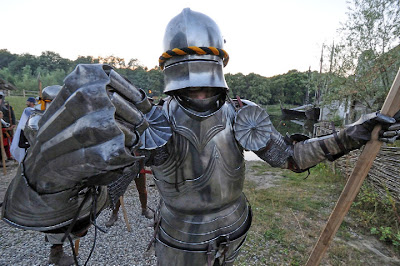I'm having a hard time understanding the difference between the plate and the plate and mail suits of armor.
A full suit of plate is Prot 12 and Load 6. This is a "late-medieval, Gothic style plate (c. 1400)."
A full suit of plate and mail is Prot 10 and Load 5. This is "Plate and mail is a combination of mail strengthened with various metal plates. It gives better overall protection than the ancient, all-plate harness."
OK. I'm no SCA member, but it's my understanding that the weakness of the platemail was joints and cracks could be used to puncture the armor, and this was made more difficult by the use of the underlying chainmail. Given the description of plate and mail as "better overall protection," shouldn't it have a Prot higher than 10? Or is the Plate Prot 12 too high? How much worse was the ancient, all-plate harness than the cool 1400 plate?
The real reason I'm asking is my character has acquired some scales of a might 60+ dragon and plans to magically create a suit of armor from them, and I want to have an idea of what the suits Prot will be.

